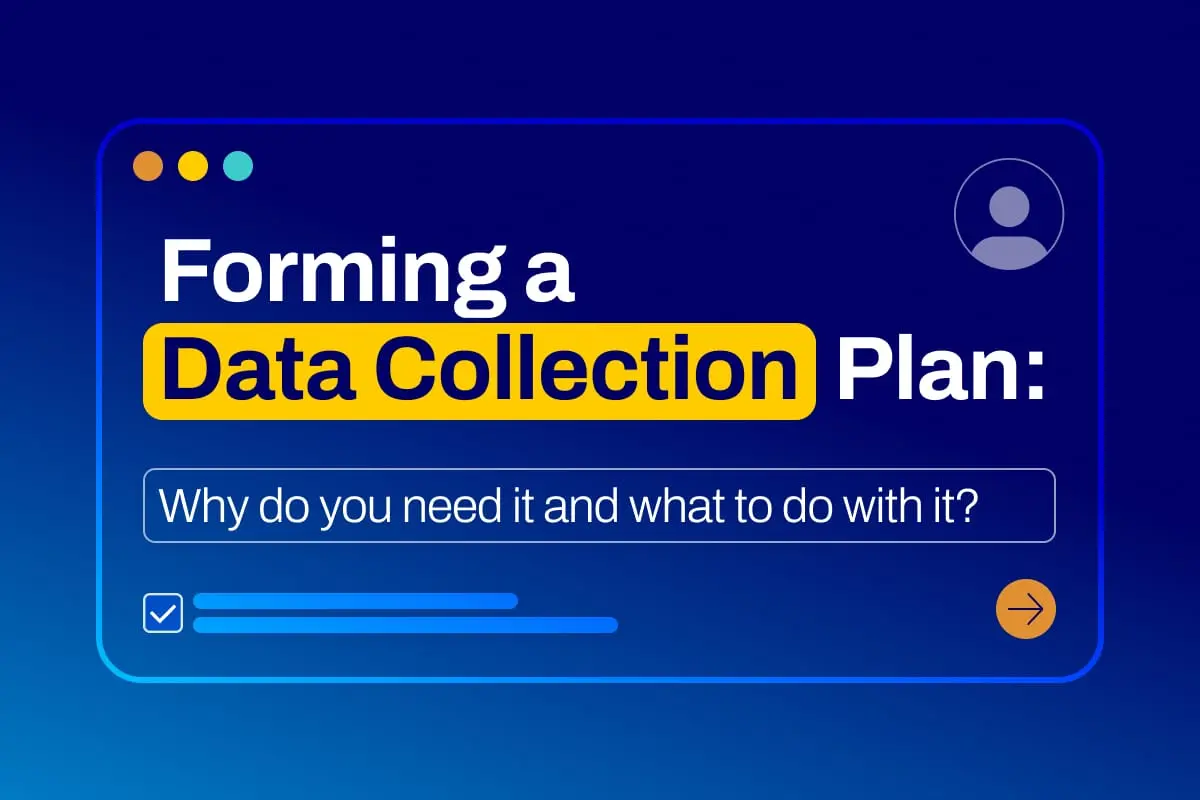
Despite considerable advances in data science, marketers continue to gather data en masse, often because “we can.” The truth is consumers feel companies collect way too much data, with 44 percent viewing emails that contain content based on personalized shopping history as a violation of privacy.
The questions all marketers and data managers must consider:
- Why are we collecting the data we collect? What are our goals?
- Does each datum have a truly defined purpose, or is it a “just in case” scenario?
- How are we collecting data? Do we use legally compliant tactics?
- Do we utilize this data to its full potential?
- Are we satisfied with the state of our data collection at this point in time?
For those without a concrete data collection plan, we’ll go over the types of data and some strategies to utilize what gets collected.
Types of data to collect
Let’s start by breaking down data types into the basics. In general terms, we can put data into two categories: quantitative and qualitative.
Quantitative data
The following are the classification of quantitative data, which follow fixed data points easily measured with a set of options:
- Demographic data – a collection of all the data points about a person, such as their name, email, title, income, location, marital status, and more.
- Firmographic data – a collection of all the data points about a business, such as company name, industry, number of employees, annual revenue, and stage in the sales cycle.
- Behavioral data – reflects the interaction between website users and app users. This reveals the data collected from your website or app visitors, such as pages visited, links clicked, average time on site, and a count of visits, retention rate, churn rate, daily/monthly active use, and more.
- Contextual data – relates to a visitor’s unique properties while providing context to their behavior on a website or an app, such as device type, browser type, location, and time of day.
Collecting demographic and firmographic data often requires visitors to fill out and submit a form. This may include a newsletter subscription, a demo registration, a live chat transaction, or a lead magnet download. This data typically ends up in your CRM, where you also obtain some automatic date and time stamping, lead source tracking, and lead activity insights.
Qualitative data
On the other hand, qualitative data can only be collected through questionnaire-style methods to garner the customer’s attitudes, motivations, and opinions. How this data gets stored depends on your organization’s data collection plan. Some of the qualitative information that can be collected includes:
- Opinion (e.g., their favorite journey destination for a holiday)
- Motivations (why they requested a particular service)
- Attitudinal (e.g., customer satisfaction reviews)
All the data you collect falls into one of these boxes. Later, and as you’ll see, you need to design a process that creates a single customer view.
Data you need to improve personalization
It’ll come as no newsflash to hear personalization is the key to successful data marketing. 40 percent of consumers say the worst thing about email marketing stems from receiving irrelevant content, and personalization ensures content remains in tune with subscriber preferences.
Yet a crucial paradox exists. On the one hand, customers value personalized experiences, but on the other, they are far from ready to give such data away so easily.
So, where do we begin to find solutions to this issue?
58 percent of Gen X consumers and 63 percent of Millennials are willing to share data with companies in exchange for personalized offers and discounts. Stating the obvious, these are significant numbers marketers might consider “low-hanging fruit.”
The moral of the story – customers are more likely to share their personal data if brands can show the benefits of doing so.
Establish trust with your customers – let them know precisely what data you are collecting, why you are doing so, and how you intend to use the data. This might sound a little too open to some, but ask yourself this: If you’re collecting data you know a customer would strongly object to, then should you be collecting this data in the first place? Would the type of data you wish to collect harm customer relationships if they found out you collected it without their knowledge?
You might also wish to consider predictive marketing in this regard. Predictive marketing uses both marketing and customer behavior data to detect patterns. This approach allows you to contact customers in ways and at times that they prefer to be contacted. Additionally, predictive marketing will help you, well, predict the outcomes of your marketing efforts before they happen, allowing for necessary tweaks before the go-live date.
Data into action: Storage and campaign integration
Once customer data starts rolling in, how do you maximize its impact?
Data storage
After you’ve identified what data you’d like to collect for personalization purposes, you have to decide how and where to store this data. Will it be your CRM, CDP, or an external data warehouse?
In Salesforce Marketing Cloud, it’s essential to determine how the data you collect can be used and where it ought to be stored. From various data points, you need to create a connected experience. To do so, you must develop a process that allows you to create a single customer view.
Marketers tend to access customers’ information via their CRM. Ideally, all data points should connect and create a 360-degree customer view, informing marketers of the ideal channels and segments to classify communications.
However, since data comes from different sources, it’s common to operate between multiple platforms, which naturally complicates the process of data management and later use for personalization.
Some companies use a customer data platform (CDP). This solution is convenient for teams that receive heavy amounts of data and want to manage it outside of Marketing Cloud. Recently, Salesforce announced their own CDP to tackle issues where native connectors fall short.
Targeting audiences
The next step of the data collection plan requires proper audience segmentation. Using quantitative and/or qualitative data, create audiences revolving around common attributes, such as recent purchases or location.
Once target audiences get created, prime those subscribers for engagement with content tailored to customers’ individual needs and positions in the purchase cycle. Also known as personalization, the more complex the custom offers and messaging, the more likely recipients are to meaningfully engage.
Based on how subscribers interact with messages, feed the associated behavioral data back into customer journeys through new campaigns and segmentations. For example, a customer who clicks a link is removed from their current campaign and placed in one offering exclusive deals to highly engaged contacts.
Putting it all together: Forming a data collection plan
From start to finish, campaign performance relies on the robustness of a data collection plan. It’s important to formalize this plan in the following ways.
- Know specific data sets. What are the questions you want answered, and why are you collecting data in the first place?
- Identify accessible data. What kind of data can you reasonably collect?
- Determine how much data is required to reach these goals. You’ll need to gather enough information to properly analyze what you collect and place it in the proper context, while maintaining proper compliance with applicable regulations and laws.
- Determine how to gather and measure the data. Common methods include anything from check sheets to survey responses.
- Establish who is going to collect the data, and ensure data is in the proper format before enacting the data collection plan.
- Determine the data sources. Where will the data come from, where will it be stored, and how will it sync with Marketing Cloud?
- Establish timelines, responsibilities, and processes among team members to ensure data accumulates accurately and syncs to the right places.
Conclusion
As previously mentioned, successful campaigns rely on not only collecting data, but being able to then maximize its value through in-depth personalization that strengthens customer relationships and fosters engagement.
DESelect Segment offers a way for marketers of all backgrounds to easily filter, join, and perform calculations upon data extensions, creating granular segments ripe for personalized communications. Learn how Segment helps your team reach the right audience.










